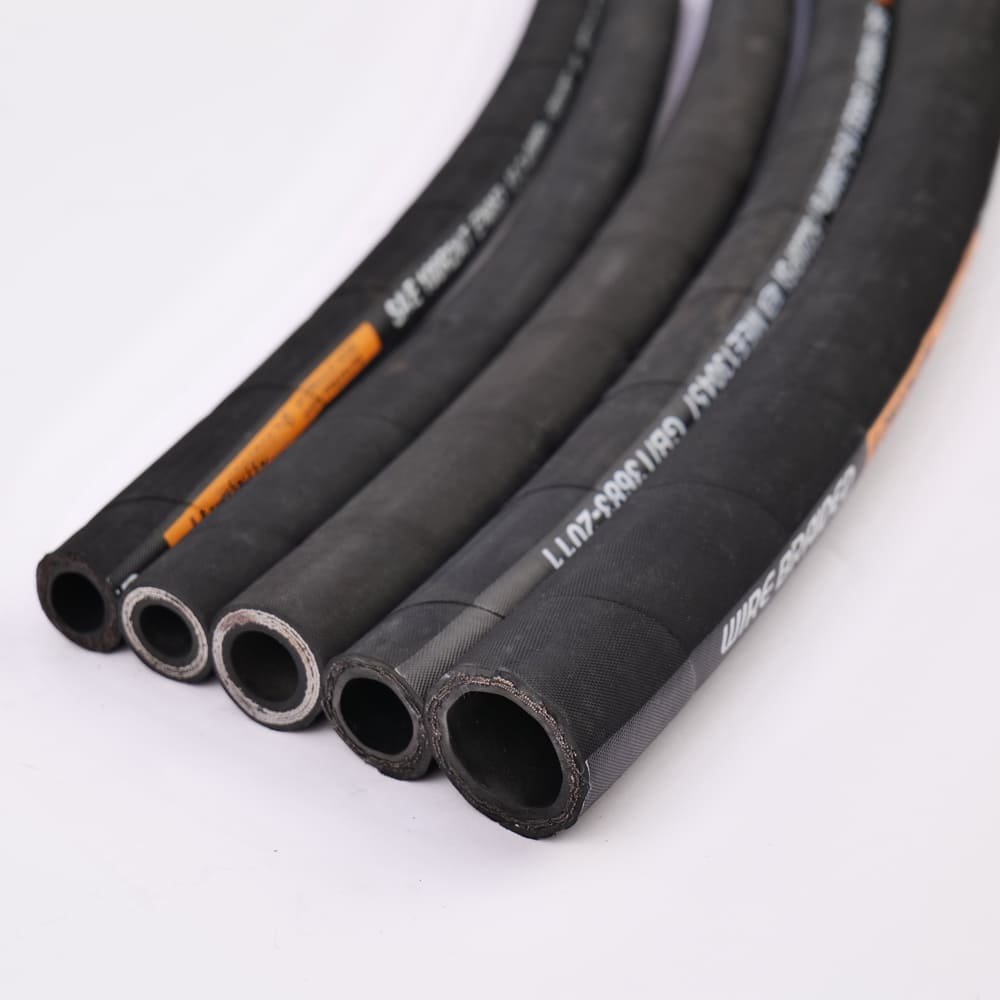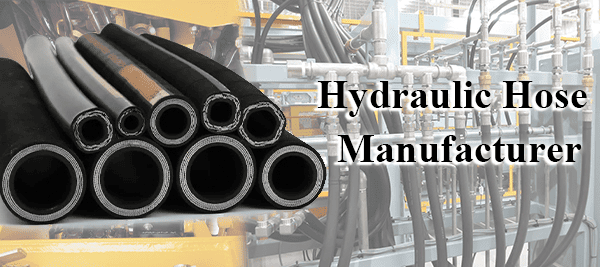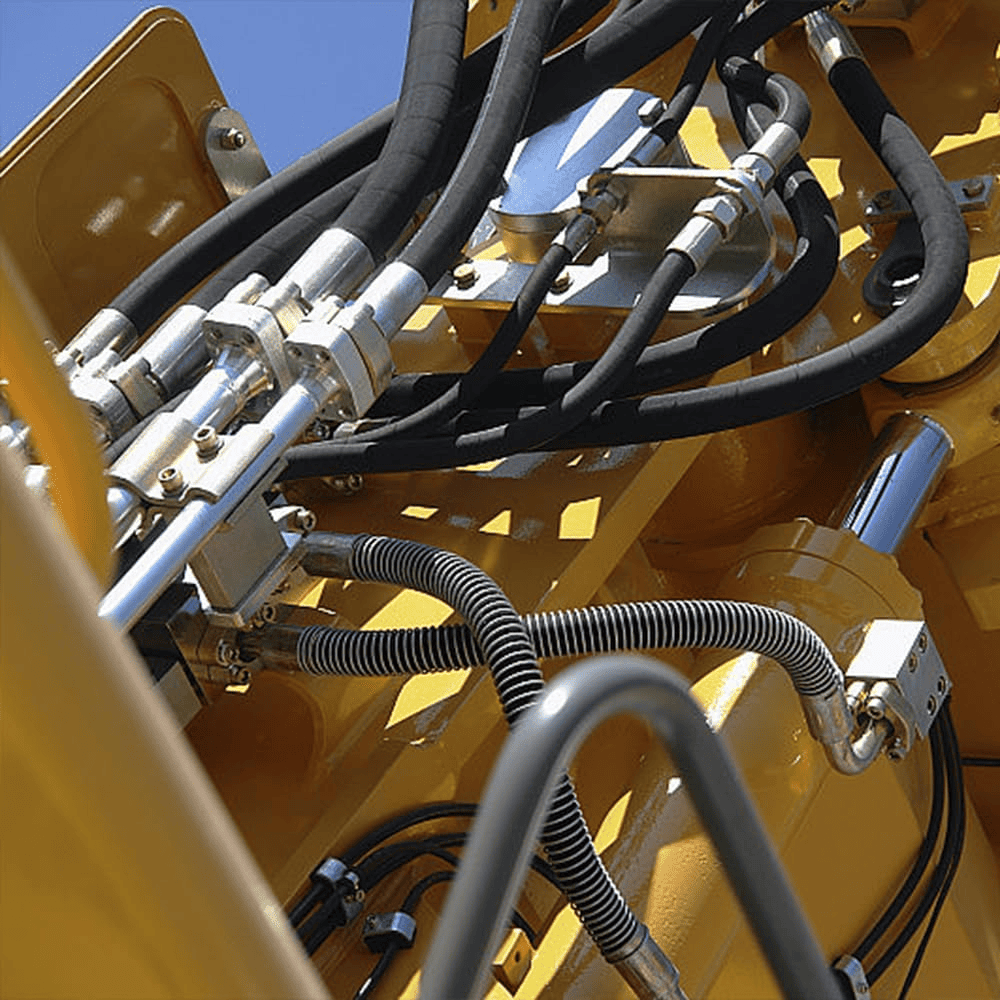If you work with hydraulic systems, you know how important hose size is. The wrong size can cause leaks, low pressure, or even damage. The good news? Once you understand how hose sizing works, it’s pretty simple.
This guide will show you how to measure hydraulic hose sizes and pick the right one for your system.
The size of a hydraulic hose is determined by its inner diameter (ID), measured in sixteenths of an inch and expressed as a “dash size.” To choose correctly, you’ll match your system’s flow rate (in GPM) with the recommended flow velocity (in ft/sec) using a hydraulic hose size chart or calculator. This ensures efficient flow, prevents pressure loss, and keeps your system running smoothly.

Now let’s take a closer look at what hose sizes include, how you can measure them, and how to identify the right one for your job.
What Hydraulic Hose Sizes Include
Each hydraulic hose has three main measurements that affect how it performs:
1. Inner Diameter (ID)
This tells you how much fluid can move through the hose. It’s the most important size. Hydraulic hoses are usually measured in sixteenths of an inch and shown as a dash size.
For example:
- –4 = ¼ inch
- –8 = ½ inch
- –12 = ¾ inch
A smaller hose makes the fluid move faster but can raise pressure too much. A larger hose lowers pressure but can take up more space.
2. Outer Diameter (OD)
The outer diameter includes the hose cover and reinforcement layers. Knowing this helps when you’re choosing clamps, guards, or fitting the hose into tight spaces.
3. Length
Length affects how well the hose bends and how much pressure you lose. Measure the full length from one fitting end to the other — not just the rubber part.
4. Standards
Hoses are made under different standards, like:
- SAE 100R series – common in the U.S.
- ISO 1436 – used worldwide
- DIN EN 853–857 – common in Europe
Always use a hose that meets or exceeds your system’s standard for safety and reliability.
How to Measure Hydraulic Hose Size
If you need to replace a hose, here’s how you can measure it correctly.
Step 1: Measure the Inner Diameter
Use a caliper or a ruler to measure across the inside of the hose opening. This gives you the ID. Then check a hydraulic hose size chart or PDF chart to match it with the correct dash size.
Example: if it measures 0.5 inches, that’s a –8 hose (½ inch).
Step 2: Measure the Outer Diameter
Measure across the outside of the hose. This helps you pick protective sleeves or clamps that fit properly.
Step 3: Measure the Length
For a hose with fittings, measure from one fitting seat to the other. If you’re cutting new hose, add a little extra for crimping.
Step 4: Check the Layline Markings
Most hydraulic hoses have printed markings that tell you everything you need — size, standard, and working pressure.
For example:
1/2” SAE 100R2AT – WP 2750 PSI – 2025/03/12
That tells you the ID, standard, pressure rating, and manufacturer date.
Step 5: Seek Professional Advice
If you’re unsure about the measurements or hose type, we recommend contacting a professional hydraulic hose manufacturer or supplier. Provide them with your ID, OD, length, and fit information. They can confirm the correct hose, recommend fittings, and ensure it meets your requirements, including pressure and temperature.
How to Identify Hydraulic Hose Size
Sometimes, you can’t measure easily because the hose is installed or worn. In those cases, here’s how to identify it.
1. Read the Hose Layline
The layline (the printed text on the hose) gives you the dash size, manufacturer, and rating. Example:
Parker 451TC-8 – SAE 100R17 – 3000 PSI
Here, the –8 means it’s a ½-inch ID hose.
2. Look at the Fittings
Each hydraulic fitting has a thread type, and knowing which you’re using helps identify the hose. The most common are:
- BSP (British Standard Pipe) – common in the UK and Europe
- JIC (37° flare) – common in North America
- NPT (tapered thread) – seals by thread interference
- Metric – used in many European and Asian systems
3. Use a Hose Size Calculator
If you know your system’s flow rate, you can use a hydraulic hose size calculator online. It helps you find the best hose size for your setup without guessing.
Hydraulic Hose Sizes and Fittings
Getting the right fittings is just as important as getting the right hose.
Types of Fittings
- Crimped fittings: Permanent and best for high pressure.
- Reusable fittings: Can be taken apart and reused.
- Flare and compression fittings: Common in smaller systems.
Common Fitting Standards
| Fitting Type | Thread Angle | Region | Example |
| JIC | 37° flare | U.S. | –6 JIC male/female |
| BSP | 60° cone | Europe | BSPP or BSPT |
| ORFS | Flat face | Global | O-ring Face Seal |
| Metric | Various | Europe/Asia | M16×1.5 |
Always make sure your fittings match your hose size and thread type to avoid leaks.
Standard Hydraulic Hose Sizes
Here’s a handy chart of common hose sizes:
| Dash Size | Inner Diameter (in) | Inner Diameter (mm) | Common Use |
| –4 | ¼” | 6.35 mm | Control or pilot lines |
| –6 | ⅜” | 9.53 mm | Return lines |
| –8 | ½” | 12.70 mm | Medium-pressure lines |
| –10 | ⅝” | 15.88 mm | High-flow systems |
| –12 | ¾” | 19.05 mm | Main pressure lines |
| –16 | 1″ | 25.40 mm | Suction lines |
Hydraulic Hose Mistakes to Avoid
Here are a few tips to help you avoid common problems:
- Always recheck the size before ordering a replacement.
- Don’t bend the hose too tightly. It can crack or block flow.
- Use matching fittings. Mixing types like BSP and JIC causes leaks.
- Protect the hose with guards or wraps to prevent wear.
- Test for leaks after installation by running pressure safely.
Summary
When you choose the correct hydraulic hose size, you can protect your equipment, reduce downtime, and keep your hydraulic system running efficiently.
Ready for your next hydraulic hose order?

Contact us today for a free consultation. Our professional team can provide you with a customized service to meet your exact needs.


